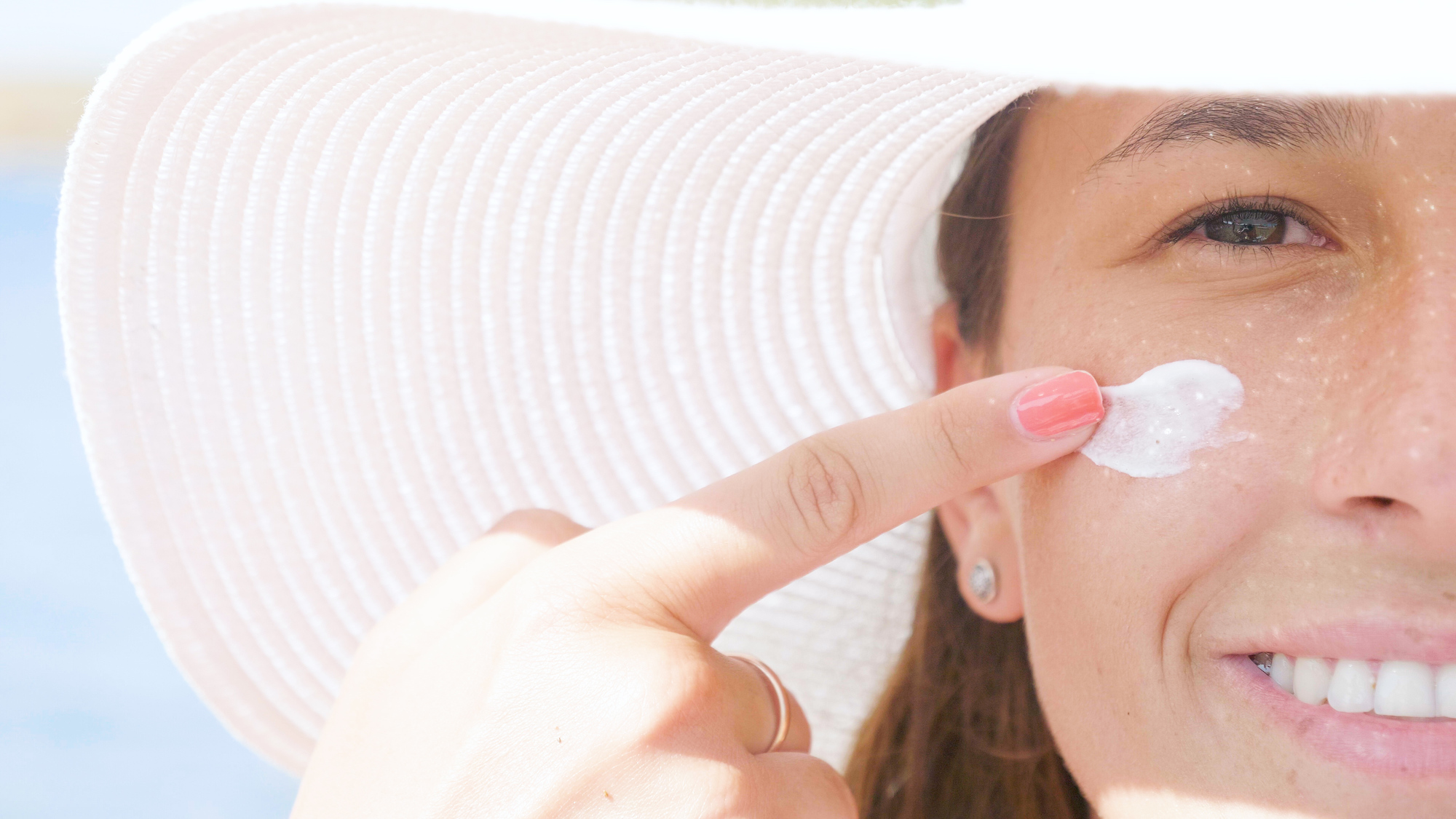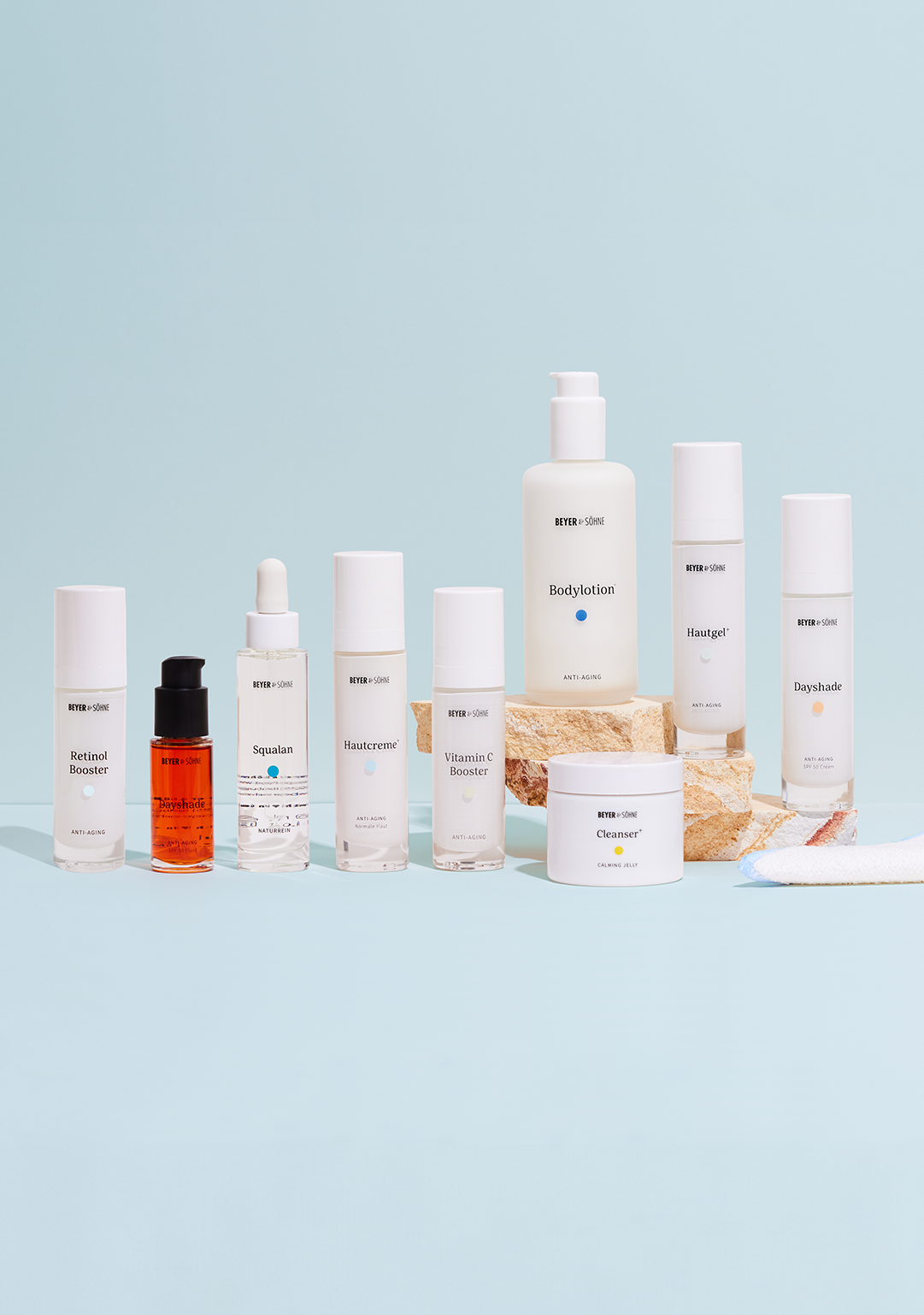Sun Protection Made Easy
UV Protection in Day Creams: Really a Good Solution?
UV rays damage the skin and cause aging. This is well-known, and that's why more and more day creams now include a sun protection factor (SPF). While this sounds like a good idea, there are also drawbacks. Here's what you need to look out for.

Nico Beyer
September 2024

Table of Contents
Is the UV Protection Really Sufficient?
A Day Cream With SPF Is Different...
UV Filters Require a Different Cream Base
Good UV Filters and Bad UV Filters
Protect Your Skin from Free Radicals
The Natural Protective Mechanisms of Our Skin
Vitamin D Dilemma: To Sunscreen or Not?
SPF or Not: What is Our Recommendation?
Conclusion
Is the UV Protection Really Sufficient?
It’s true that UV rays accelerate skin aging by generating free radicals. A day cream with SPF can reduce this source of stress. Thus, it helps prevent pigmentation spots and the formation of wrinkles.
However, a 100% protection is never possible, as not all UV rays can be blocked. Particularly UVA rays, which cause creeping long-term damage, are difficult to shield against.
If a day cream with SPF is also intended to have anti-aging effects, it must offer high UVA protection. This is the best way to counteract skin aging and wrinkle formation. Many day creams lack the UVA seal, which indicates superior UVA protection.
Our tip for UVA protection:
Make sure the packaging displays the UVA seal. This seal certifies that the product offers UVA protection of at least one third of its UVB protection. Generally speaking, the higher the UVA protection, the better. If in doubt, consult your manufacturer.

Every day care product with SPF should display this UVA seal.
A Day Cream With SPF Is Different...
To ensure protection from the sun, creams utilize UV filters. To achieve sufficient protection, especially from UVA rays, a significant amount of these filters is required. For a sunscreen with SPF 30 and a UVA seal, UV filters can constitute up to 20% of the cream. This is substantial and leaves less room for other active ingredients that are beneficial for the skin.
Most skin-friendly UV filters are fat-soluble and can leave a greasy feel on the skin. As a result, the cream may contain fewer beneficial oils that provide the skin with essential lipids.
In natural cosmetics, only mineral UV filters such as Zinc Oxide or Titanium Dioxide are used. These alter the texture and sensation on the skin. Additionally, these filters can have a drying effect. For oily or acne-prone skin, this could be advantageous, provided that the formulation doesn’t overly rely on oils.
UV Filters Require a Different Cream Base
High UV protection cannot be achieved with a cream base similar to the skin (for example, with the natural active ingredient Phosphatidylcholine, the main component of our cells). Hence, a day cream with SPF cannot have the same effect as a top-notch cream with exclusively skin-identical ingredients. However, good skincare properties are still attainable.
Even a day cream with high SPF can contain excellent anti-aging ingredients like Hyaluronic Acid or Vitamin C, which additionally protect your skin from the sun. Particularly, Ceramides, the building blocks of our skin, are sensible in a facial cream with sun protection. Ceramides enhance moisture and thereby increase the skin's natural defense time. They also ensure that Hyaluron works even better.
Good UV Filters and Bad UV Filters
Not all UV filters are skin-friendly. UV filters should not have hormonal effects, must be photostable, and should not possess allergenic potential. The safety of nanoparticles is highly debated. We advise against their use.
In this article, you will learn which UV filters we recommend and which we consider to be of concern.
Protect Your Skin from Free Radicals
UV rays are particularly damaging because they produce free radicals in the skin. These aggressive molecules destroy essential components of healthy skin, leading to premature aging. Using a day cream with SPF can at best reduce, but not eliminate, this problem.
Free radicals are also formed in the body independently of the sun. The danger is not only external but also internal. Hence, alongside UV filters, it is crucial to provide antioxidants.
Antioxidants neutralize free radicals and help our bodies remain healthy longer. Therefore, anti-wrinkle care should always include antioxidants.
The most well-known antioxidants are Vitamins C, A, and E. However, there are also particularly effective antioxidants found in nature. Astaxanthin is considered the world's most powerful antioxidant, which is why we use it in our Dayshade Cream with SPF 50. Our Dayshade Fluid, the red sun protection oil with SPF 50, also contains Astaxanthin.

The best sun protection: A hat and shade.
The Natural Protective Mechanisms of Our Skin
The skin has its own defense mechanisms against UV radiation. The most important of these is melanin. These pigments are responsible for tanning the skin. This protection only develops when the skin is exposed to the sun. That's why we get sunburned more easily at the beginning of summer than at the end; by then, our skin is already "in training."
If we use a sunscreen every day, even with low UV exposure, we deny the skin this training effect, and its own protection isn't built up. However, as mentioned at the beginning, a cream with SPF never blocks all radiation. So, there is still a slight training effect even with a product that has sun protection.
Vitamin D Dilemma: To Sunscreen or Not?
Vitamin D is vital for the body and is synthesized in the skin through UVB radiation. Even low-level SPF can block the body's synthesis of Vitamin D. Hence, many users of a day cream with SPF are concerned about their Vitamin D levels. It seems like a dilemma: either sun protection or Vitamin D. Which is more important?
The fact is: In our latitudes, it is very difficult to achieve sufficient Vitamin D levels through UV radiation alone, which also relates to our lifestyle. We are mostly clothed and often indoors. Therefore, we recommend having your Vitamin D levels tested and supplemented accordingly, whether you use daily sun protection or not.
SPF or Not: What is Our Recommendation?
Every skin is unique, and so is everyone's need for protection. Even here at Beyer & Söhne, opinions vary on the subject. Some use UV protection on their face all year round, while others only reach for sunscreen during strong sunshine and outdoor activities. Ultimately, everyone must decide for themselves, but we do have a clear recommendation based on the UV index.
The stress that the skin undergoes from UV radiation varies from day to day, measured by the UV index. Interestingly, the UV index is also displayed in the weather app on most smartphones.
UV Index 0-2
: At this low UV index, we would not recommend sunscreen. The skin is better served with the additional benefits of a good day cream. During the winter months, the UV index averages around 1.
UV Index 3
: A sunscreen factor in your day cream may be worthwhile, depending on how much time you spend outdoors.
UV Index 6 and higher
: With a high or very high UV index starting at 6, the day cream with SPF should have a minimum factor of 30 and provide adequate protection against UVA rays with a UVA seal.
Conclusion
UV rays damage the skin and cause it to age more quickly. A day cream with UV protection can help mitigate this, but it also has its drawbacks. Those considering a day cream with SPF should be aware of these considerations and make their decision based on their personal protection needs and the current UV index.
| Hautcreme+ | Dayshade Cream | Conventional day care with SPF | |
|---|---|---|---|
| Skin-like base | ✔ | ✘ | ✘ |
| High-quality natural oils | ✔ | O | O |
| Anti-aging active ingredients | ✔✔ | ✔ | O |
| Moisture | ✔ | ✔ | ✔ |
| Hyaluronic acid | ✔ | ✔ | ✘ |
| High SPF (at least 30) | ✘ | ✔ | ✘ |
| UVA seal | ✘ | ✔ | ✘ |
| Waterproof | ✘ | ✔ | ✘ |
The table compares our Hautcreme+, Dayshade Cream SPF 50, and a conventional day cream with SPF. Hautcreme+ offers the best skincare properties due to its extensive active ingredients and skin-like cream base. Dayshade Cream SPF 50 provides good protection against both UVA and UVB rays while still maintaining good skincare properties. Conventional day care with an SPF of 20 (without a UVA seal) offers only inadequate UV protection and contains only a small number and amount of anti-aging ingredients.
This article was updated in June 2019.
Sources
Bundesamt für Strahlenschutz –
Was ist der UV-Index?
BASF –
The evolution of UVA protection
Canadian Dermatology Association –
Sun Safety for Every Day?
Studie auf Pubmed –
Natural Antioxidants: Multiple Mechanisms to Protect Skin From Solar Radiation
